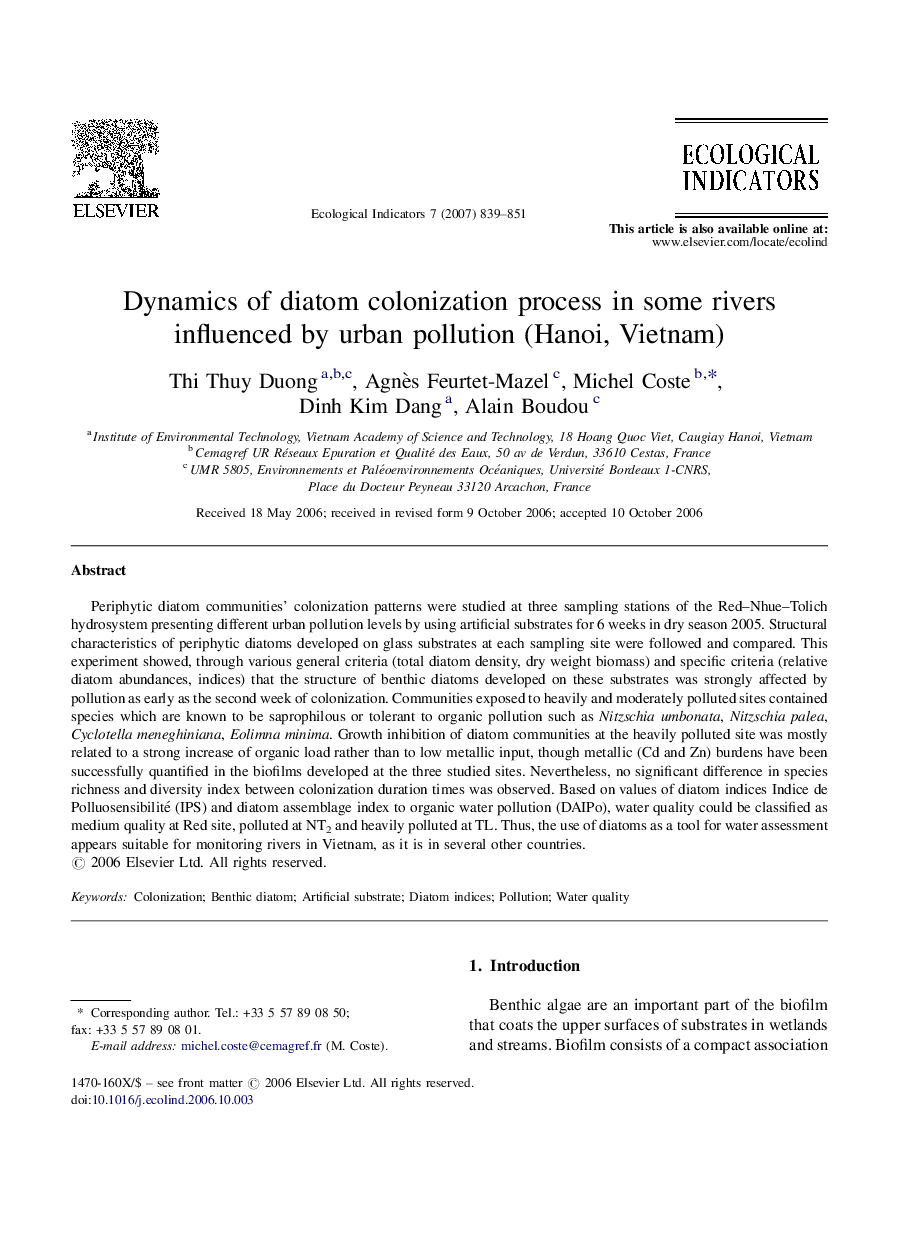| Article ID | Journal | Published Year | Pages | File Type |
|---|---|---|---|---|
| 4374659 | Ecological Indicators | 2007 | 13 Pages |
Periphytic diatom communities’ colonization patterns were studied at three sampling stations of the Red–Nhue–Tolich hydrosystem presenting different urban pollution levels by using artificial substrates for 6 weeks in dry season 2005. Structural characteristics of periphytic diatoms developed on glass substrates at each sampling site were followed and compared. This experiment showed, through various general criteria (total diatom density, dry weight biomass) and specific criteria (relative diatom abundances, indices) that the structure of benthic diatoms developed on these substrates was strongly affected by pollution as early as the second week of colonization. Communities exposed to heavily and moderately polluted sites contained species which are known to be saprophilous or tolerant to organic pollution such as Nitzschia umbonata, Nitzschia palea, Cyclotella meneghiniana, Eolimna minima. Growth inhibition of diatom communities at the heavily polluted site was mostly related to a strong increase of organic load rather than to low metallic input, though metallic (Cd and Zn) burdens have been successfully quantified in the biofilms developed at the three studied sites. Nevertheless, no significant difference in species richness and diversity index between colonization duration times was observed. Based on values of diatom indices Indice de Polluosensibilité (IPS) and diatom assemblage index to organic water pollution (DAIPo), water quality could be classified as medium quality at Red site, polluted at NT2 and heavily polluted at TL. Thus, the use of diatoms as a tool for water assessment appears suitable for monitoring rivers in Vietnam, as it is in several other countries.
